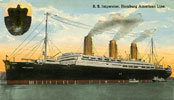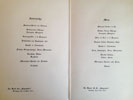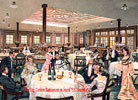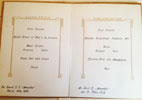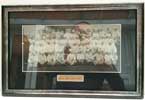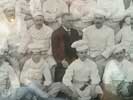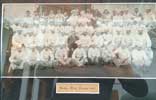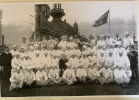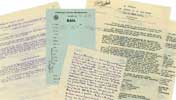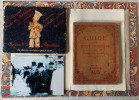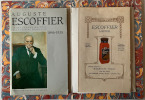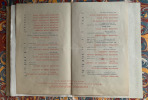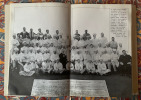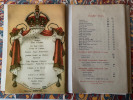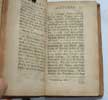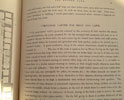Farley.
John
- The rare first edition
The London Art of Cookery,
AND HOUSEKEEPER'S COMPLETE ASSISTANT. On a NEW PLAN. Made Plain and Easy to the Understanding of every HOUSEKEEPER, COOK, and SERVANT in the Kingdom. CONTAINING, Proper Directions for the Choice of all Kinds of Provisions. Roasting and Boiling all Sorts of Butchers Meat, Poultry, Game, and Fish. Sauces for every Occasion. Soups, Broths, Stews, and Hashes. Made Dishes, Ragouts, and Fricasses. All Sorts of Pies and Puddings. Proper Instruction for dressing of Fruits and Vegetables. Pickling, Potting, and Preserving. The Prepeartion of Hmas, Tongues, and Bacon. The whole Art of Confectionary. Tarts, Puffs, and Pastries. Cakes, Custards, Jams, and Jellies. Drying, Candying, and Preserving Fruits, &c. Made Wines, Cordial Waters, and Malt Liquors. To which is added, AN APPENDIX, Cotaining Considerations on Culinary Poisins; Directions for making Broths, &c. for the Sick; a List of Things in Season in the different Months of the Year; Marketing Tables, &c. &c. Embeliched with A HEAD of the AUTHOR, and a Bill of Fare for every Month in the Year, elegantly engraved on Thirteen Copper-plates. By JOHN FARLEY, PRINCIPAL COOK AT THE LONDON TAVERN. LONDON: Printed for JOHN FEILDING, No.23, Pater-noster Row; and J. SCAT-CHERD and J. WHITTAKER, No.12, Ava Maria Lane, 1783. [Price Six Shillings Bound.]
FIRST EDITION. 1783. 3feps. [1]Engraved Frontispiecs of Farley - Publish'd Jan 1. 1783 ---. Title page. [1] (1)iv-vi Preface with facsimile signature of Farley. (1)viii-xx Contents. 12 engraved plates of Bills of Fare. (1)2-455. 456-459 Marketing Table. [1] 3feps. Full dark brown modern calf with blind tooling to the edge of the boards. The spine with raised bands and panels with gilt dentelles and enclosed gilt lines. Two labels, one red, one green with gilt writing. Water stains to the frontis and title page not affecting the text, nor Farley's portrait. Otherwise very clean internally. A lovely copy.
-
Towards the end of the eighteenth century, large taverns had become fashionable banqueting places for gentlemen in London. This was reflected by their chefs and their published cookery books; This book by John Farley, Principal Cook at the London Tavern. Also Richard Brigg’s, ‘The English Art of Cookery’ from the Globe Tavern, Fleet St, the White Hart Tavern, Holburn and at the Temple Coffee House. Not forgetting Francis Collingwood and John Woolams, ‘The Universal Cook,’ from the Crown and Anchor Tavern in the Strand.
Farley's place of employment, The London Tavern in Bishopsgate Street was the largest restaurant and banqueting facility in the City. It held functions for up to two thousand five hundred people at a sitting. In E. Callow's book on 'Old London Taverns - 1901 & J. Timbs 'Clubs of London' 1872, we learn that the establishment was 'par excellence' and the 'temple of gastronomy' in London. It did not have a bar nor coffee house, with a facade so large and discreet that many people thought it was the Bank of England. It had a prodigious cellar that stretched to both sides lengthways, even under the neighbouring buildings and far out in the front under Bishopsgate Street itself. It held among its huge stock hundreds of barrels of Porter, butts of Sherry, 4,300 dozen bottles of port, 1,200 dozen Champagne, walls of bottled Claret six deep, etc etc. We are informed that the floors of the cellars were a river of sawdust. Also in a huge tank in the cellar that occupied a whole vault, we find two tons of live turtle. We are informed that they can keep in excellent condition for three months if kept in the same water in which they were brought to the country. We learn that to change the water to that available here lessens the weight and flavour of the Turtle. We can find in Farley's book tips and information on how he grew mushrooms in the cellars. What a place to work! The kitchen brigade must have been huge, the wage bill for the whole Tavern - a small fortune each week.
In PPC 42 & 43, Fiona Lucraft lays out a very comprehensive and compelling piece of research that rightly condemns Farley of devious and outright plagiarism and proves that most of The London Art of Cookery has been taken straight from the cookery books of Hannah Glasse and Elizabeth Raffald.
Nevertheless one gets a sense from Farley’s book that he was a very good professional cook proud of his high standards. He is one of the first English cooks to express (so typical of the French for more than a century) a continuing need for progress and improvement in the culinary arts.
Farley in his introduction states with some pride that -- 'Cookery, like every other Art, has been moving forward to Perfection by slow Degrees; and, though the Cooks of the last Century boasted of having brought it to the highest Pitch it could bear, yet we find that daily improvements are still making therein, which must be the Case of every Art depending on Fancy and Taste: ---’
Farley appears to have very high standards of cleanliness and safety, repeatedly stressing in his book, the need for saucepans to be both clean and well tinned and he has an appendix on ‘culinary poisons’, particularly the risk of copper poisoning, which can happen when the tin wears down and exposes foodstuffs to the copper underneath.
Whatever Fiona Lutcraft's excellent article in PPC proves, this is still an exceptional cookery book and gives a very good idea of the foods and dishes available at a highly reputed establishment. One has to assume that as Farley brought out his very popular book that ran to many editions, albeit, some of it plagarised, he also cooked and served a large percentage of the recipes at The London Tavern.
As a footnote; the first luxury restaurant to open in Paris paid homage to Farley’s place of work. In 1782 - ‘La Grande Taverne de Londres,’ was founded. The owner, Antoine Beauvilliers, a leading culinary writer and gastronomic authority, later wrote L’Art du cuisinier (1814), a cookbook that became a standard work on French culinary art. This book of Farley's on view here is the extremely rare first edition, and is equally as rare as the first editions of Glasse and Raffald.






|
|

Antiquarian category
ref number:
11035
|








